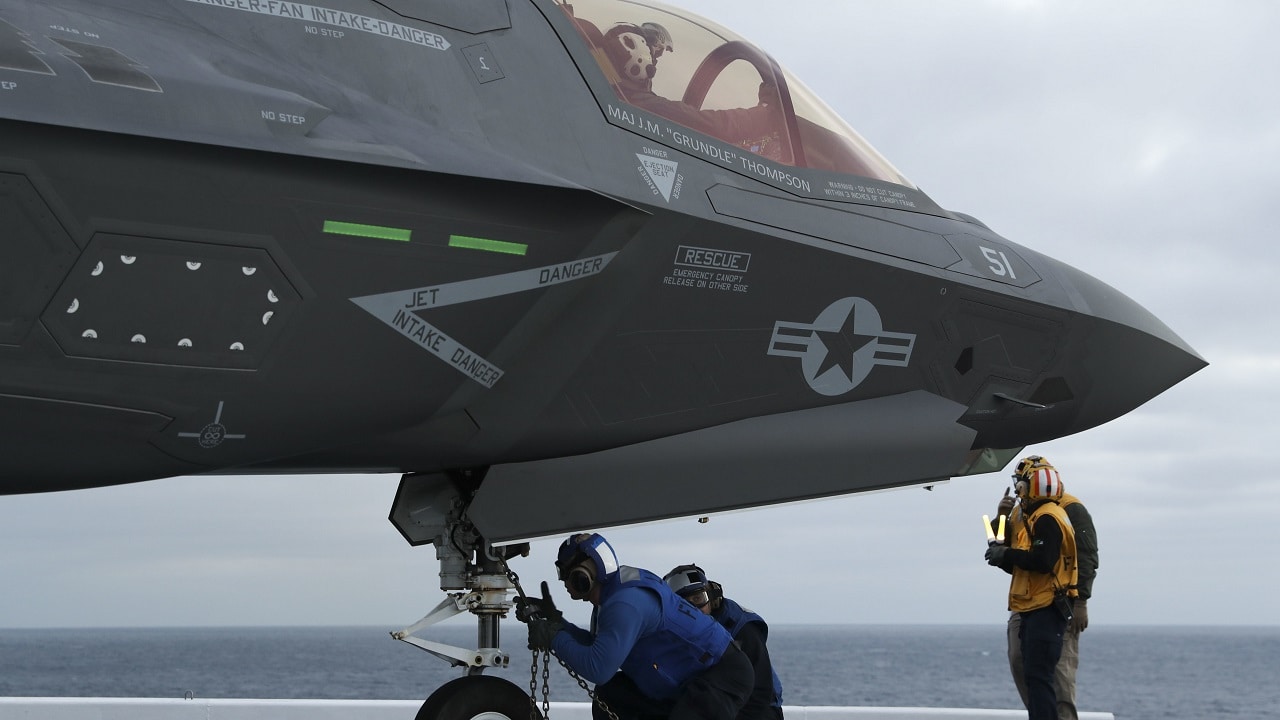The biggest story in aviation right now is the mysterious crash of an F-35B Joint Strike Fighter in South Carolina last weekend.
Questions are swirling about what exactly happened. Especially: what made the pilot decide to eject. And how did the F-35 keep flying, without a pilot, for another 60 miles before finally crashing to Earth?
Here’s what is known so far.
The F-35 Ejection
A Marine Corps official, who did not have clearance to speak publicly about the incident and spoke under the condition of anonymity, said that the pilot experienced a malfunction and was “forced to eject.” At the time of ejection, the jet was flying at an altitude of just 1,000 feet – and just one mile north of Charleston International Airport, meaning the pilot ejected flying low in a densely populated area. The pilot parachuted safely, landing in a residential backyard. Fortunately, the $100 million F-35 did not crash land in the residential area along with the pilot.
What forced the pilot to eject remains unclear.
“The Marine Corps variant of the F-35 is different from the Air Force and Navy versions,” the Associated Press reported. The Marine Corps variant is “the only one of the three variants that has an auto-eject function on its ejection seat, according to set manufacturer Martin-Baker. That has raised questions as to whether the malfunction the pilot experienced was the seat itself.”
The Marine Corps’ B-variant is also distinct in that it features VSTOL – the ability to take off and land vertically, to hover almost like a helicopter, very much like the Harrier jump jet that the F-35B is meant to phase out of the Marine Corps.
The Air Force and Navy F-35 variants, the A and C-variant respectively, require the pilot to initiate ejection – as is commonly the case in military aircraft. “But the Marine version’s auto-eject is intended to better protect the pilot in case something goes wrong with the aircraft when it’s in hover mode,” the AP reported.
Questions About the Ejection Seat
Dan Grazier, formerly a USMC captain and currently a senior defense policy fellow at the Project on Government Oversight, had questions about whether the auto-ejection seat caused the South Carolina crash. “Was that function triggered for some reason, and punched the pilot out?” Grazier asked. “There’s a lot of unanswered questions.”
Concerns about the ejection seat are not new. In July 2022, the Air Force grounded its entire F-35 fleet in response to ejection seat concerns. The Air Force’s F-35A does not have the auto-eject function, of course, but “some of the cartridges that initiate the ejection in the warplane were found to have issues, leading to the grounding,” the AP reported.
At the time, both the Navy and Marine Corps inspected the cartridges on their own ejection seats.
Further questions about the auto-eject function are the fact that the plane kept flying for 60 miles without a pilot. Clearly, the need to eject was non-urgent; the jet was still airworthy enough to stay aloft for 60 miles. So, it seems plausible that the pilot was ejected involuntarily, through the initiation of the auto-eject feature.
“If it flew that far, could [the pilot] have landed it someplace – why punch out where he did?” asked Mark Cancian, a retired USMC Reserves colonel and senior adviser at the Center for Strategic and International Security.
Harrison Kass is the Senior Editor and opinion writer at 19FortyFive. An attorney, pilot, guitarist, and minor pro hockey player, Harrison joined the US Air Force as a Pilot Trainee but was medically discharged. Harrison holds a BA from Lake Forest College, a JD from the University of Oregon, and an MA from New York University. Harrison listens to Dokken.

